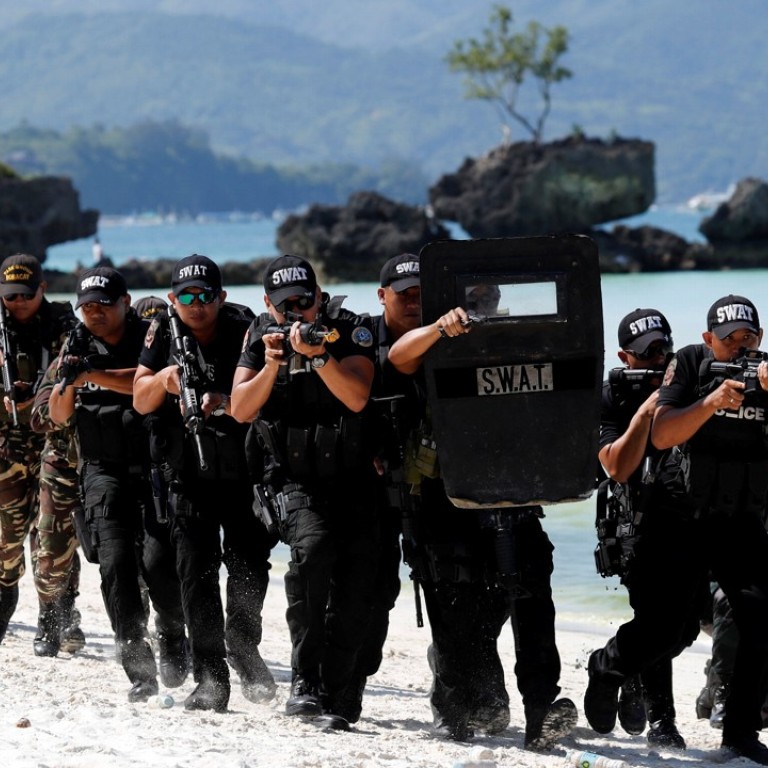
Sun, sea, sand, Swat team: police prepare for temporary closure of Philippine island of Boracay
Raw sewage pumped into the sea has turned top tourist spot into a ‘cesspool’, says President Rodrigo Duterte, who has vowed to clean the place up
Philippine police preparing to shut down the resort island Boracay staged drills in riot gear on Wednesday, startling the laid-back beach community as workers mounted a last-ditch legal effort to halt the six-month closure.
President Rodrigo Duterte has ordered the holiday destination off-limits to tourists from Thursday, saying the tiny island has become a “cesspool” tainted by dumped sewage.
As part of police drills, officers in full riot gear clashed with bottle-throwing people playing the part of protesters on the white sand beach while concerned locals watched.

In another exercise, screaming women in the role of tourists were snatched from their beach towels and held at gunpoint by hooded men.
“I was alarmed there were so many soldiers and police,” resident Dory Gaitano said. “I thought they’ll be only demolishing establishments with violations. Why are there countless soldiers?”
Politics expert Ashley Acedillo said the “disproportionate” display of force reflects Duterte’s harsh style of leadership.
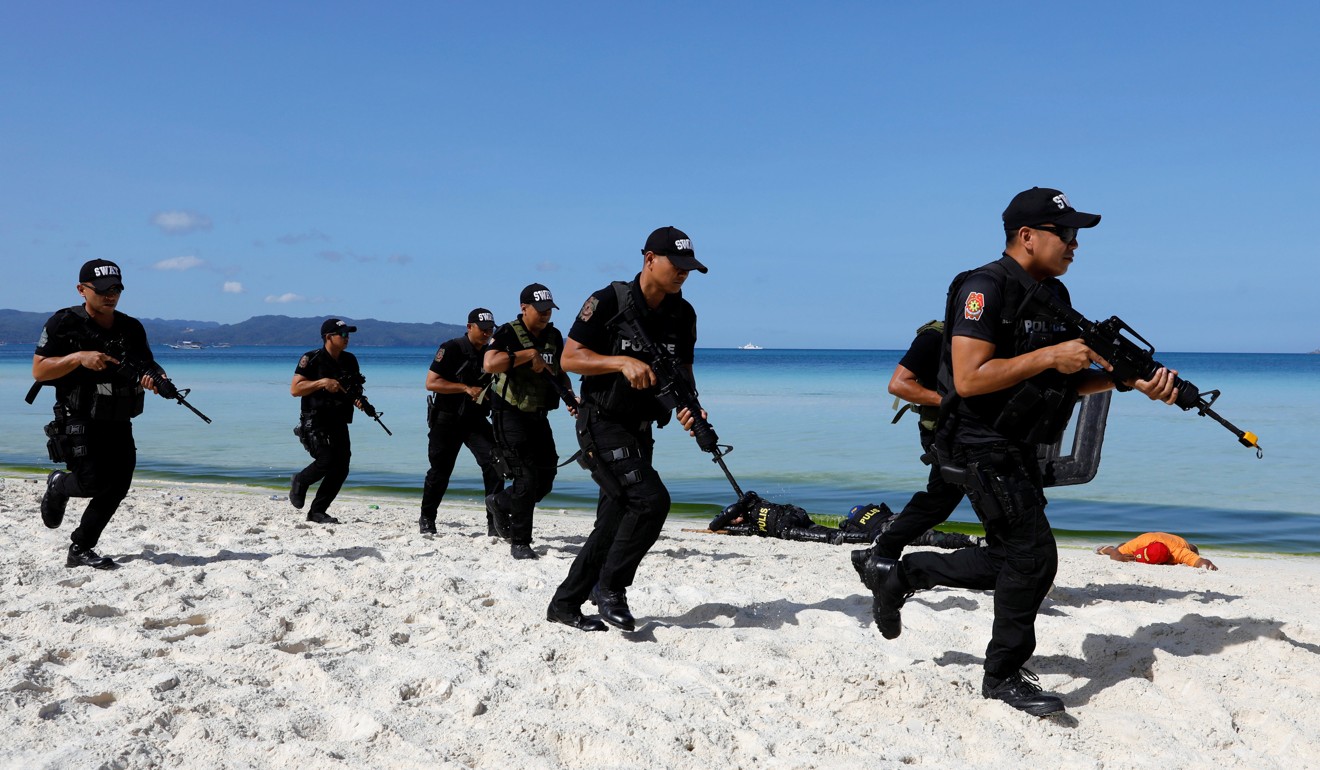
“If he wants something he does not care what people think and he is going to reinforce that with the use of military forces,” said Acedillo, who is president of the Institute for Policy Strategy and Developmental Studies think tank in Manila.
Almost no resistance has been shown to the closure plans apart from at least one small, peaceful protest in recent weeks.
Most residents agree the island has suffered from overdevelopment and needs cleaning up. Most the criticism has been over the sudden and haphazardly organised nature of the shutdown.
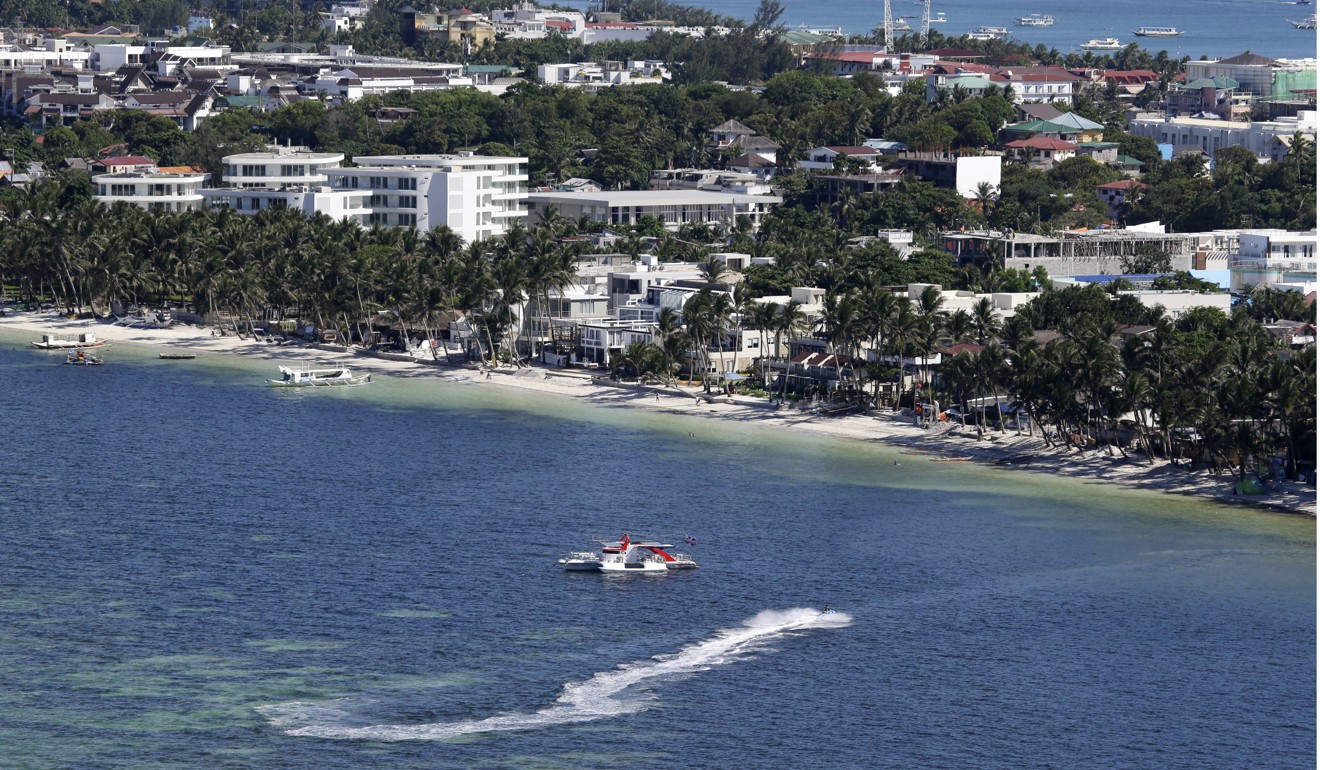
The most evident sign of conflict on Wednesday came at the Philippine Supreme Court, which Boracay residents and workers asked to halt the closure.
“It is, mainly, a constitutional challenge to the powers of the executive to arbitrary decision making,” their lawyers said in a statement. “If Boracay is closed to tourists, they will lose their source of income, and they would not be able to feed their families.”
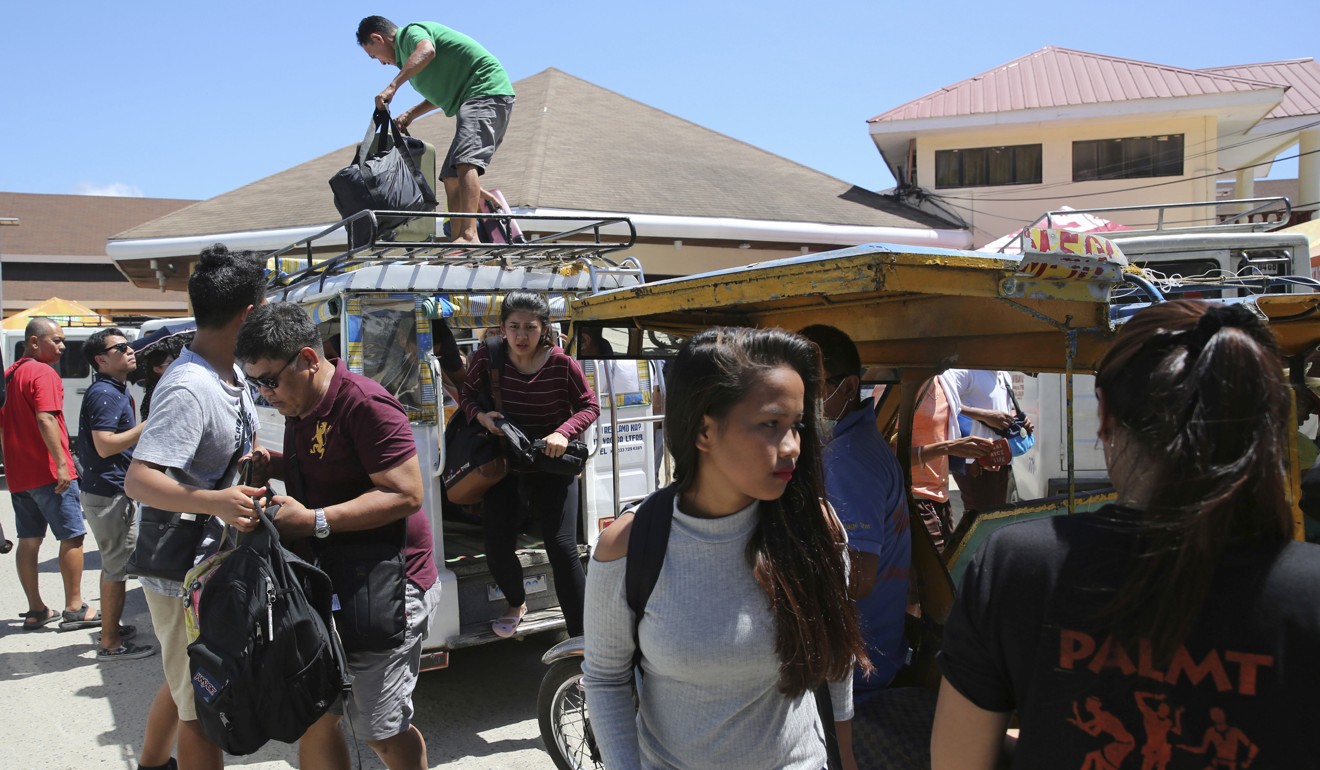
Boracay was known as the crown jewel of Philippine tourism with its world-famous powdery white sand, but unchecked tourism and environmental degradation made it far from the tropical paradise it was decades ago.
Authorities say some of the hundreds of tourism-related hotels and restaurants use the island’s drainage system to send untreated sewage into its surrounding turquoise waters.

The closure threatens the livelihood of 17,000 hotel, restaurant and other tourism workers, plus about 11,000 builders.
The island saw some 2 million visitors last year, pumping roughly US$1 billion in revenue into the Philippine economy.
Duterte has said he will release 2 billion pesos (US$38.2 million) to help the workers, but they say they have not seen a penny yet.
“My son has epilepsy and I am paying for his treatment. The government is offering a job but I am still waiting. What job and when? I will take any job as long as I have a daily income,” souvenir vendor Jenelyn Besana said.
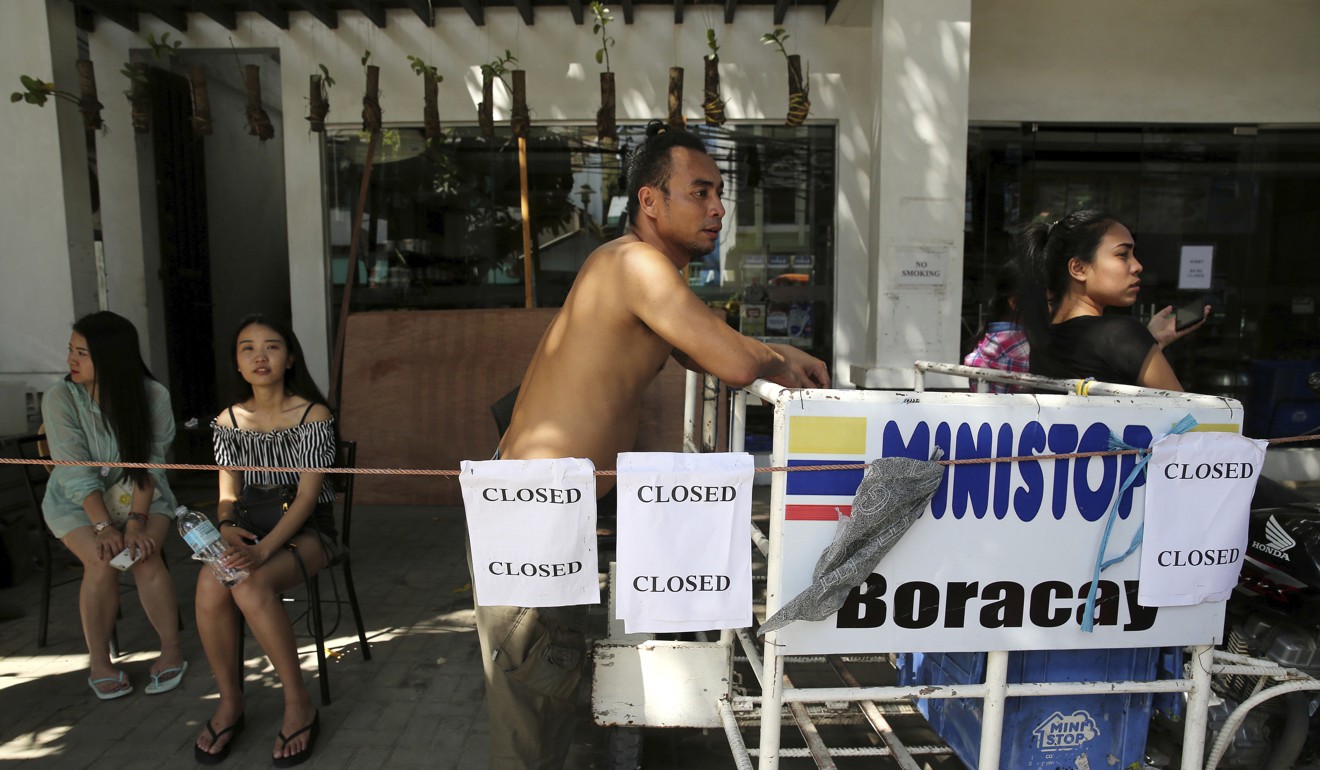
Restaurants and bars put up signs offering discounts, with most items on the menu already unavailable.
Vendors slashed 50 per cent off sunglasses and selfie sticks while tourists scrambled to get hold of Boracay souvenir shirts sold at half price.
“We call it the closure sale. We used to sell key chains in a buy one, get one promo. But now we sell buy one, get 10,” said vendor Jenie Dagunan. “We can’t eat these bracelets, might as well turn them into money.”

.png?itok=arIb17P0)